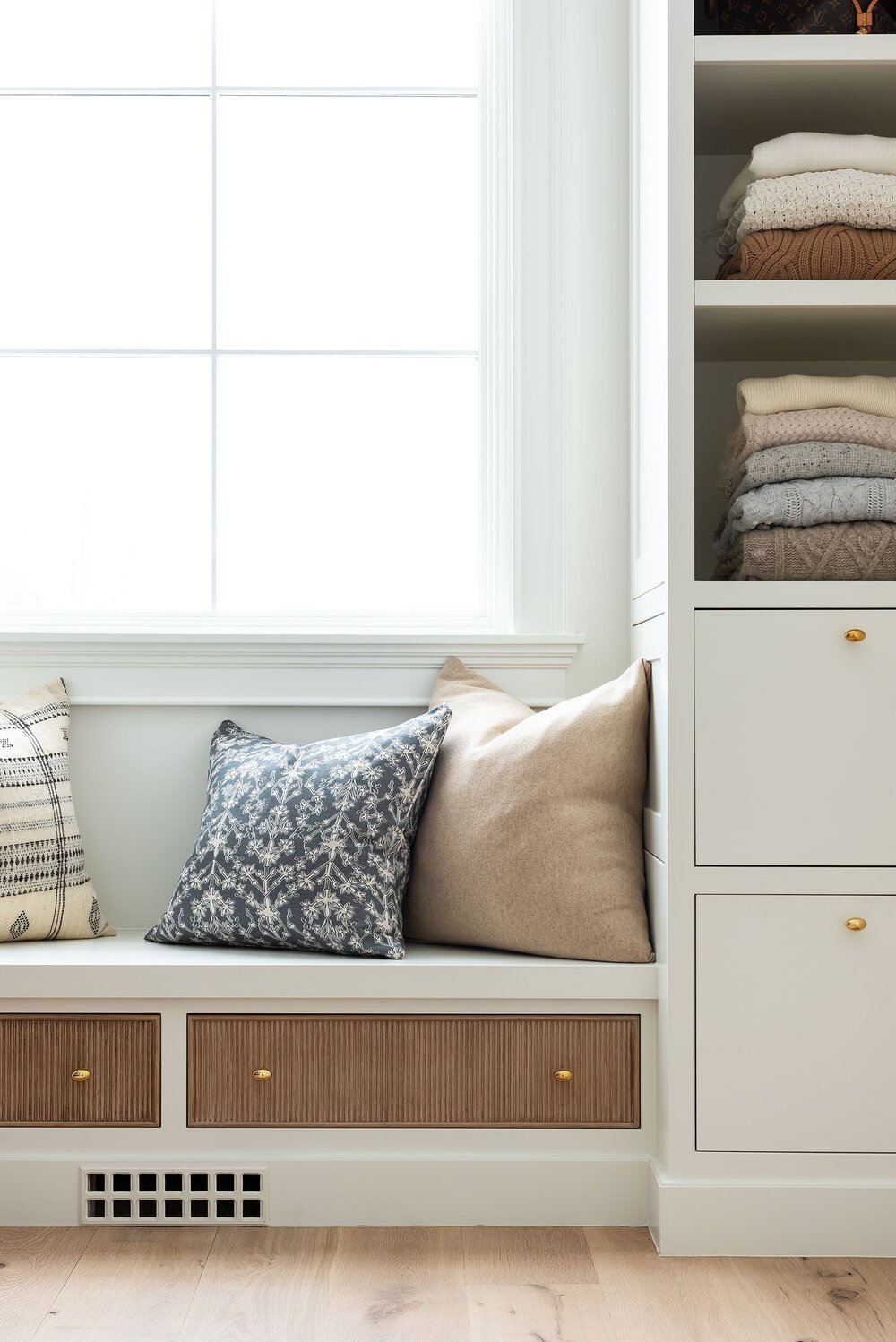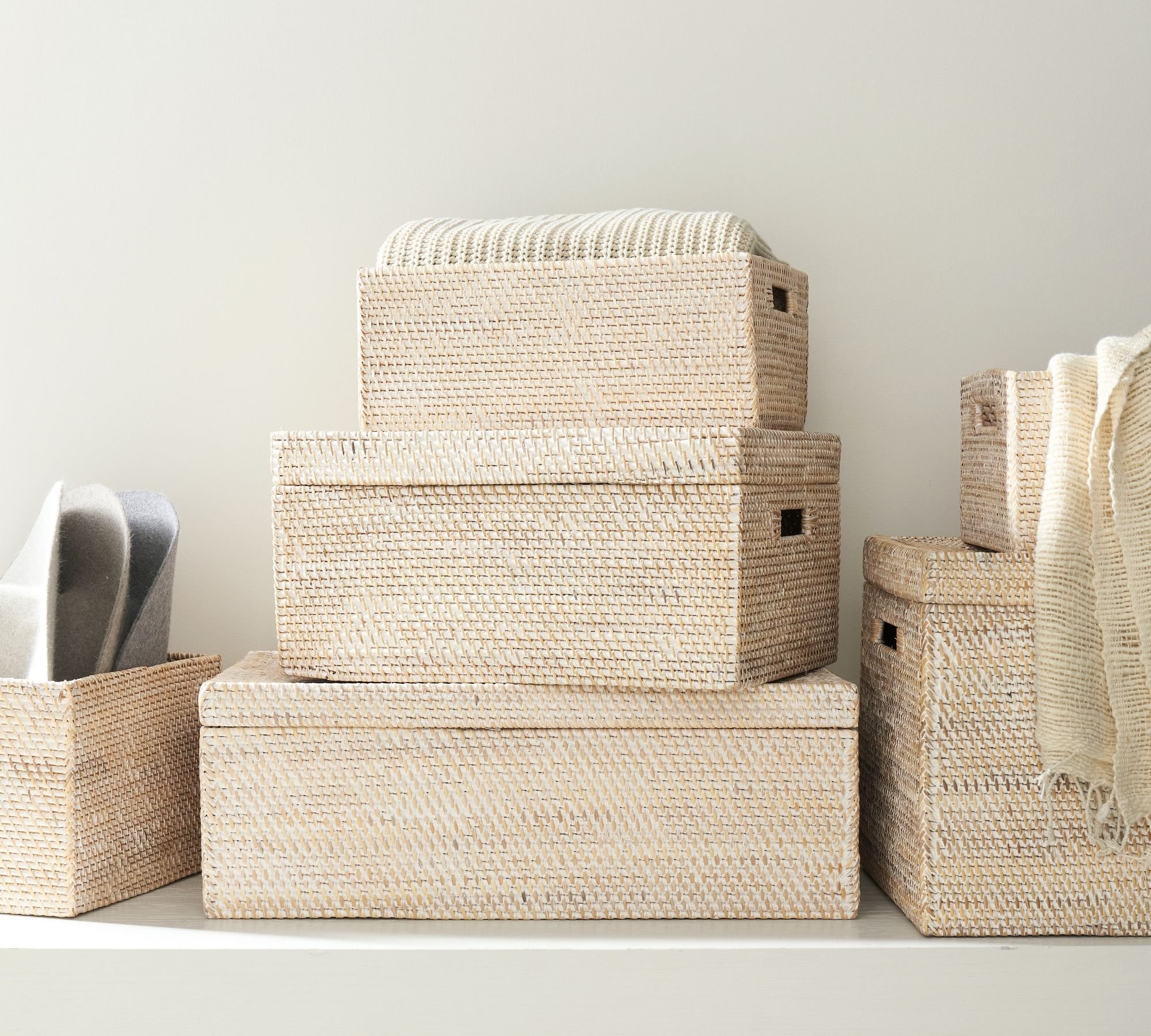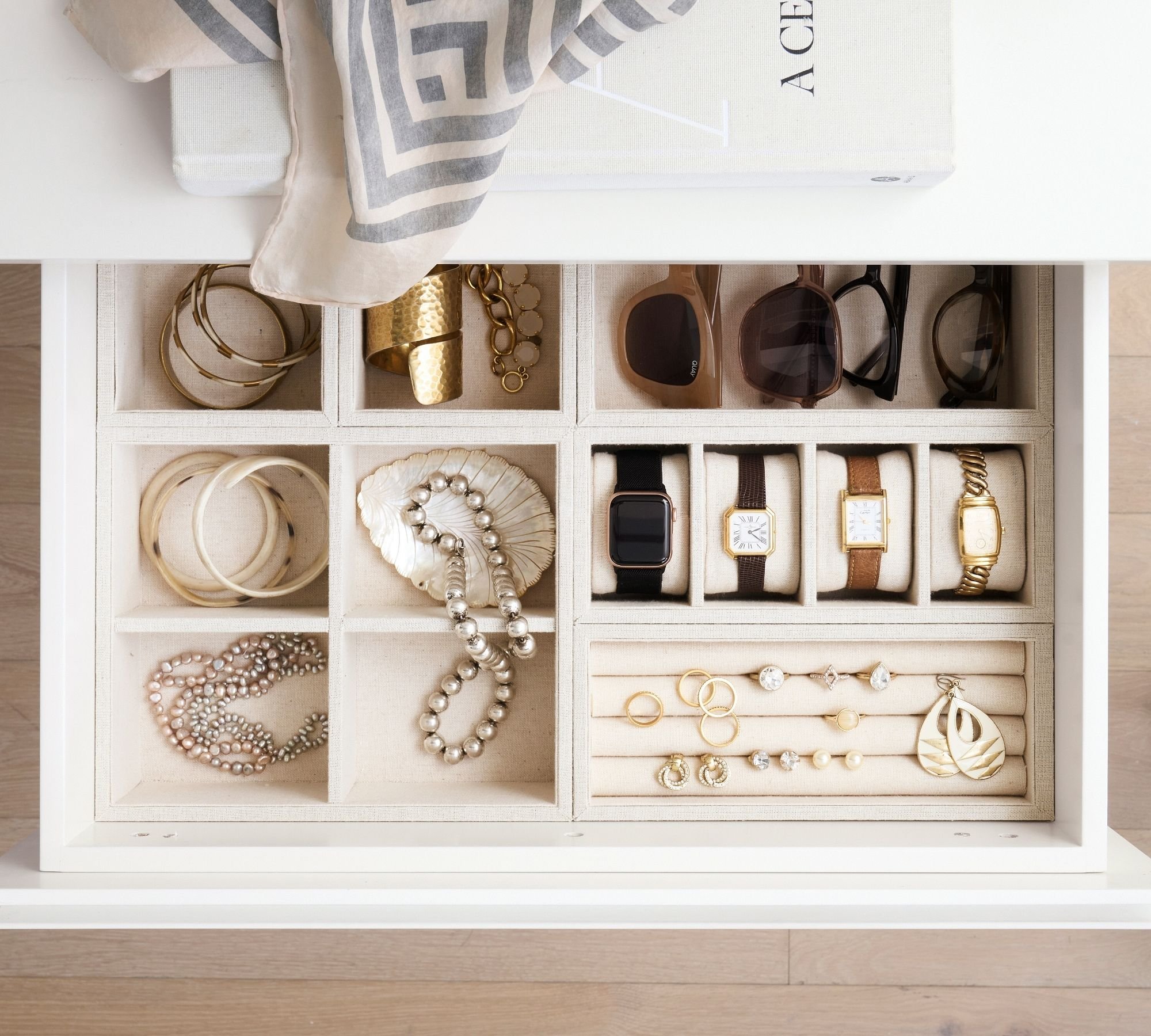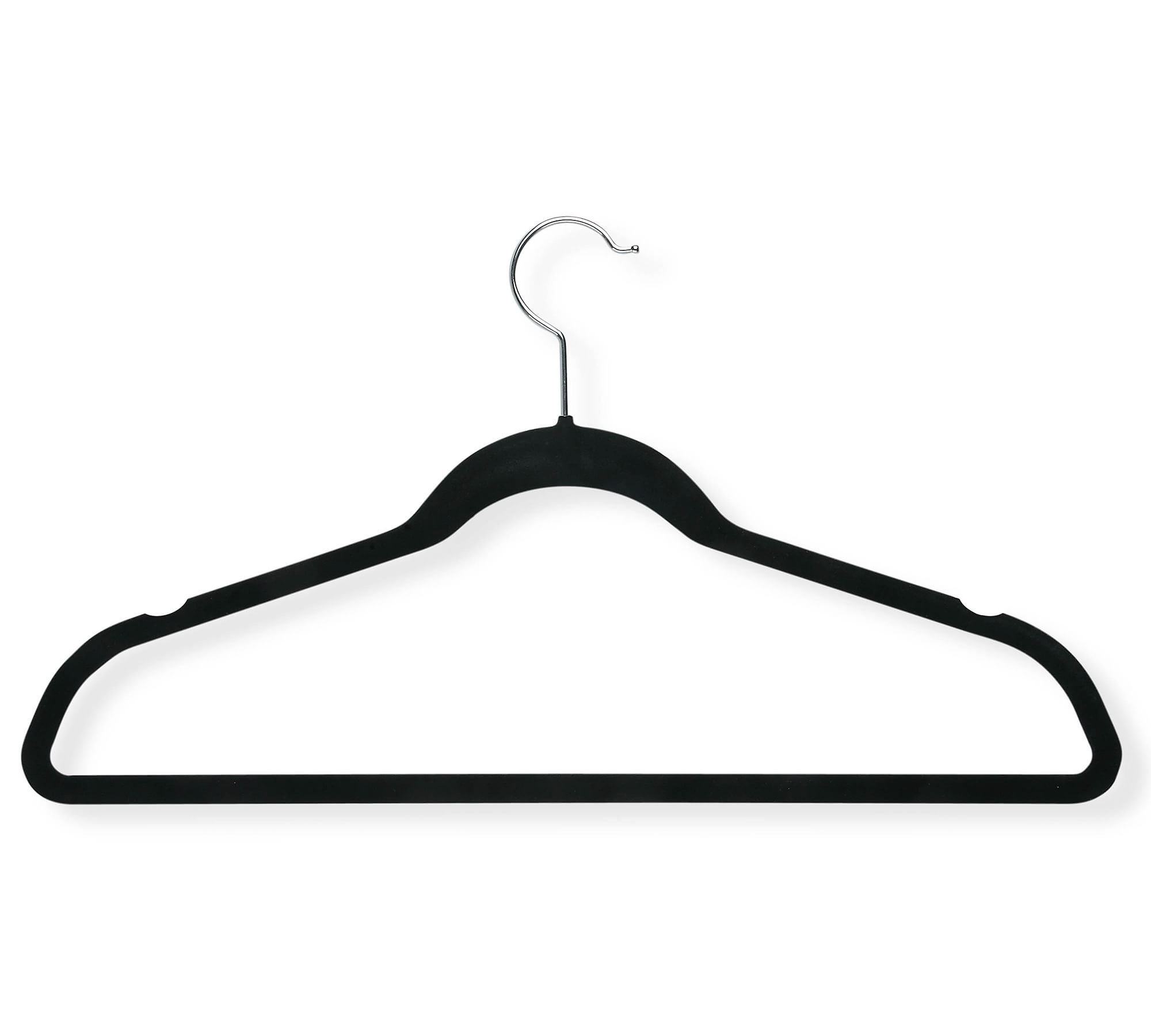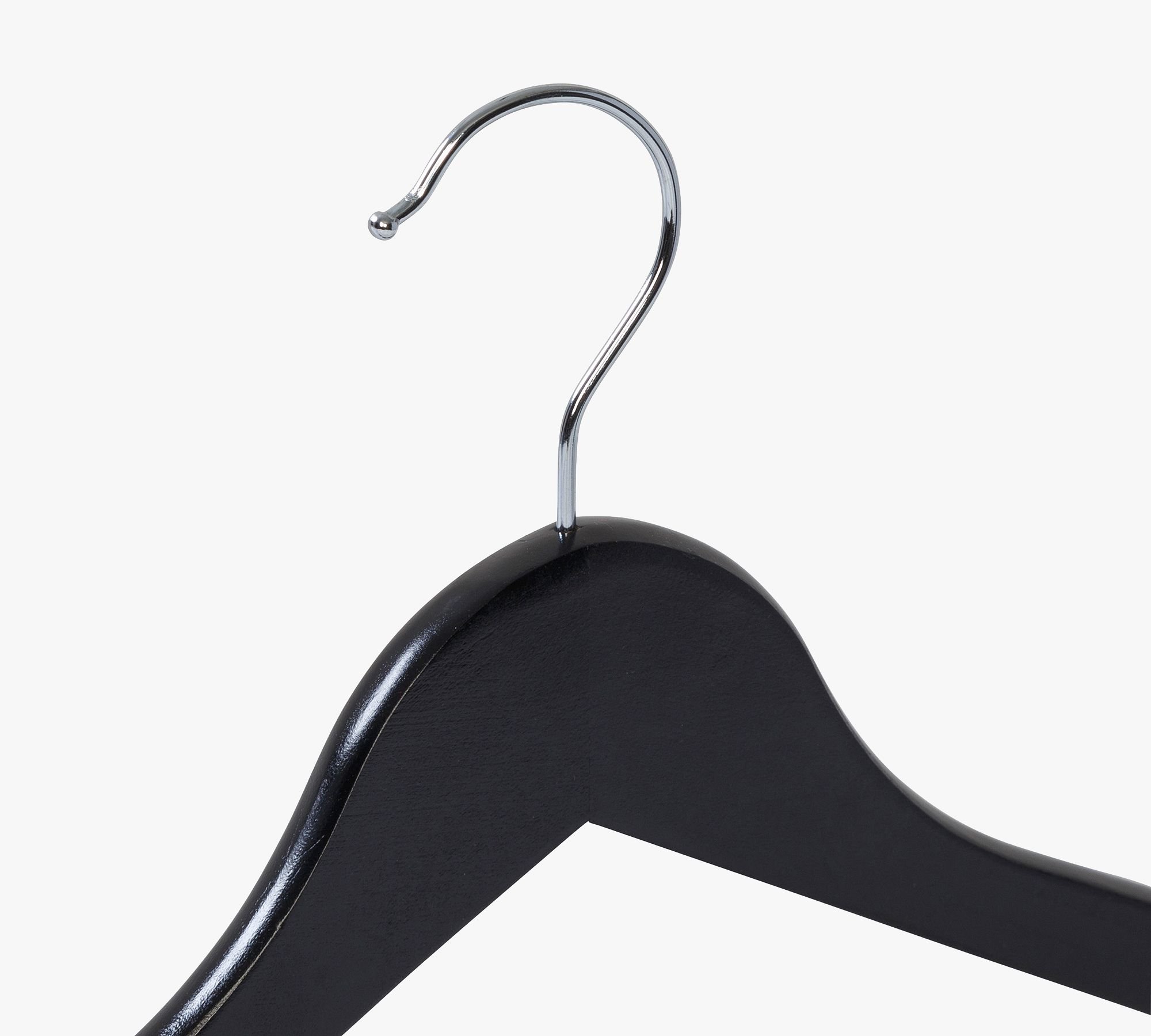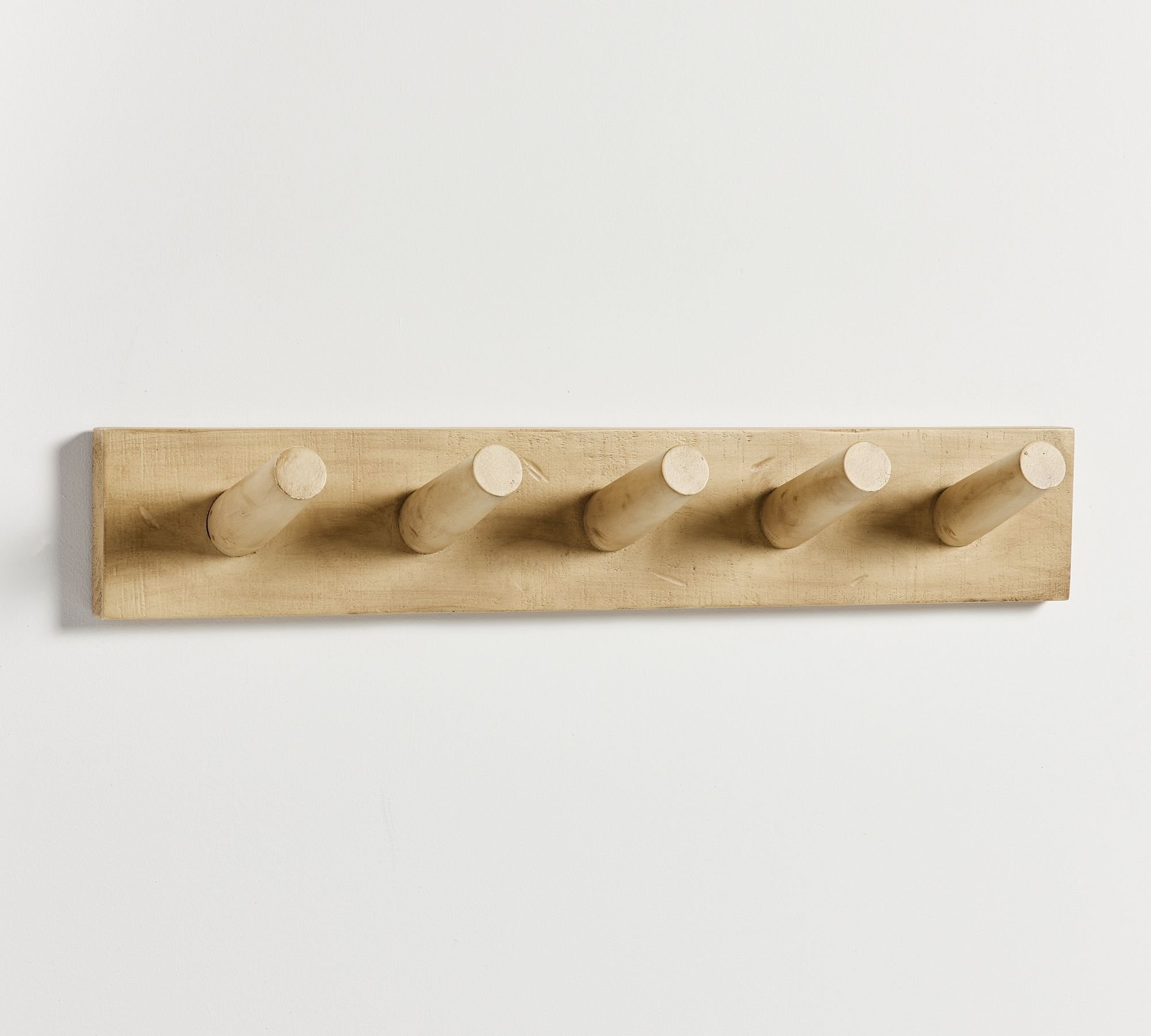The Ultimate Closet Guide to Decluttering + Organizing
A step-by-step guide for decluttering, organizing, and maintaining your closet.
To kick-off spring with a clean slate, we’re focusing on tidying up and organizing our spaces. Today, we’re focusing on the closet!
The arrival of the new season calls for a proper closet clean out. First, decluttering is a huge part of the organizing process. For us, a happy closet is not about having the most ‘it’ items or holding on to all the things for that ‘just in case’ moment; rather our goal is to curate a collection of functional and cherished clothes, shoes and accessories that both serve a purpose and evoke feelings of joy. If there’s anything within a closet that isn’t doing that, then it’s time to go. Many people can be sentimental about their things, especially within the closet, and we are very aware that parting with them can be an emotional process. During the decluttering process, we aim to get to the root of what they’re holding on to, and if it’s not serving them, fill that void with the excitement of how much better they will feel with that physical (and mental) space. Next, setting up a proper organizational system within your closet allows you to take full advantage of those remaining items you love and wear. Lastly, long-term maintenance requires a certain amount of discipline and effort, but with the new-found motivation from your perfectly organized space and a shifted perspective (and some implementing helpful below), you’ll be on track for success in the long-term.
Keep reading for our comprehensive guide to decluttering, organizing, and maintaining your closet.
The Decluttering Process
Everyone knows the value of a good closet purge, but few of us have the necessary hard heart to part with items that often have sentimental value (or worse, cost a lot of money), yet still carry their tags with the promise of a "some day" outfit. At A Good Home, we consider ourselves quite merciless when it comes to overhauling our own wardrobe (we've parted with as much as 80% of our wardrobe on more than one occasion). While a closet purge can be brutal, the result is that you end up with a much clearer picture of what you actually wear and you abolish that feeling of having nothing to wear. And with the right mindset, it's a lot easier than you think it will be. Paring down your wardrobe to essentials that you like and want to wear is incredibly liberating.
Step No. 1: First, go through your clothing and accessories; group items by category (jeans with jeans, dresses with dresses, etc.) In general, this is the best way to organize your closet, so things don't get lost in the shuffle. Then, sort by color (but that's not necessary for the purge).
Step No. 2: Enlist a friend or professional whose style you like, and has an opinion that you value. It's important to have a voice of reason around when those sentimental feelings kick-in (let's get real, you're never going to wear those “so-and-so’s” you bought on sale nine years ago and never wore), but also to help spot ways to re-work items.
Step No. 3: It can be helpful to apply some of the philosophies of the KonMari Method. Some of her rules are drastic, but the main thesis of her method is very useful which revolves around asking whether the object you're holding in your hands gives you joy. You'll be surprised by how many don't. If you're not sure of something, try it on: Does it fit properly? Does it make you feel great? Does it go with anything else in your closet (meaning can you make a complete outfit of it, or does actually wearing it require investing in something else)? Where do you plan on wearing it?
Step No. 4: As you start sorting, pull out some trash bags and make some organized piles: donation, resale, and tailoring. It's OK to make an unsure pile (more on that later). If something no longer suits you, it's a generous gesture to offer it to someone who could get great use out of it, especially if it's something you know they admire. We've given items away from our own closets that we've bought thinking one day we'd tailor them or needed something in multiples, only to get minimal use out of or create more clutter. We believe that as long as giving that item away is done with thought, it's quite effective.
Step No. 5: As you go through your closet, you'll start to see your blindspots and weaknesses. For instance, do you have an irrational fear of running out of winter coats and cocktail dresses, but don't wear either very often? See where you're a repeat offender, and if this makes sense with your lifestyle. Analyze your normal day-to-day and how you need to dress for it. Make a mental pie chart (or physical one if you're Type A like us), breaking it up into work, exercise, casual, dress-up, vacation, etc. That should be your guide in terms of how balanced your closet should be. When was the last time you went to a black tie function? Never? Then you probably don't need multiple gowns that kind-of fit. Narrow it down to the most classic one that you truly love, as a just-in-case. Are you more of a pants and jeans person than skirts and dresses? Time to stop hoarding wool tights.
Step No. 6: We all have those items in our closet that we haven't been able to part with because they were too expensive. Somehow, we think that by holding on to it (sometimes with tags intact) we can justify the purchase, but the constant reminder from your closet that you wasted good money isn't that helpful. Instead, come to terms with a bad choice, and use it as a learning opportunity to be more thoughtful when it comes to spending on items. And then pass it on.
Step No. 7: We also all hold onto items that don't quite fit anymore, and probably haven't fit for awhile, holding on to the vague reassurance that maybe they'll fit again some day. One of the most commonly asked questions I get asked when editing and organizing a closet is what to do with the clothes that don’t fit. Here’s the thing: Many women have three sizes of clothing in their closet – clothes that are too big, clothes that are too small, and the items that actually fit. Clothes that are too big perpetuate the idea that you may not succeed in your health goals and you need these items in case you fail. Boo to that idea. Let’s focus on succeeding, shall we? Furthermore, I have yet to meet a woman who actually feels excited and motivated by clothing that’s too small. Hanging onto these clothes generally does nothing more than help trigger negative thoughts about yourself and the idea that you should be different than you are right now. So many women are waiting to be their ‘ideal size’ to begin living their best lives. Opening a closet stocked with clothing that doesn’t fit reinforces that destructive pattern of behavior. No thanks. When you make the decision to clear out items that don’t fit from your closet and wear clothes that fit and flatter the body you have, you are making a statement – you are embracing yourself and your current body and treating it with the respect it deserves. Let’s start sending ourselves the message that we deserve to be treated with love and acceptance no matter what body size we are today.
Once you've completed your detox, give your clothing to people who can use them: A friend, family member, or loved one, Dress for Success (donation), United Way (donation), H&M (clothes recycling program), Madewell (clothes recycling program), The Real Real (resale), Thred Up (resale), Tradesy (resale), Rebagg (resale), Poshmark (resale), etc.
Step No. 8: For the items that have untreatable or permanent stains, rips, frayed edged and moth holes- say goodbye. Use it as a lesson to be more careful with clothing and accessories in the future, and treat each like a luxury, no matter the cost.
Step No. 9: For those items that you think you should part with but just can't because of true sentimental value, we suggest packing them away in a suitcase, duffel or bin. Set a calendar alert for six months from the current date and stash the suitcase on the top shelf of your closet. When you revisit them, you'll either feel joy or realize you didn't need to hang onto them.
The Organizing Process
Whether you've got a big, roomy walk-in, a makeshift corner in a studio apartment, or somewhere in-between, your closet should be something you like to look at. It should be organized, well-lit, and a representation of yourself. Also, having an organized closet makes it easy to recognize the pieces you've outgrown moving forward.
Size Matters
Make efficient use of your space by sorting both hanging and folding items by size. After that, sort by color. In addition to looking nice, this cuts down on the amount of time you spend trying to locate specific items.
Hangers Matter
Invest in uniform hangers. We're partial to velvet because they don't take up too much rack space and are non-slip. We love a matching wood hanger for more substantial items like blazers.
Put Your Staples on Display
Place the staples pieces you wear most often at eye level, so that they're easy to pull out when you want to wear them, and easy to put away at the end of the day (as well as after a laundry session or trip to the dry cleaner).
Properly Store Valuables
Save your dust bags for shoes and handbags, and place them all in one area of your closet. Valuable items like leather shoes should always be protected. If the space allows, it's a good idea to save the original shoe boxes (this is also a great idea if you think you may re-sale the item one day, as it increases their value). Stuff your purses with bubble wrap. If you're tight on space, use out-of-season items to fill your bags, like tights or scarves in the summer.
For heirloom pieces like jewelry, organize them in a way that makes it enjoyable to approach them, where they're cared for and kept tangle free.
Shoes
Organize your shoes by category. If space allows, use either stackable shoe containers with a clear window, or stack your original shoeboxes with a photo or other label identification. This way, you eliminate the need to open every shoe box to find the pair you're looking for, especially when you're in a rush. It's also a great idea to stuff the toes of your dressier shoes with tissue paper so they retain their shape.
Garment Care
Have a designated garment care area with things like a hand-held steamer, safety pins, sewing kit, lint brush, spot cleaner, etc. This allows you to be better equipped for last minute emergencies and touch ups, and could even save you a trip or two from the dry cleaner.
Jewelry
Delicate jewelry can easily get tangled, lost or forgotten. Drawers with built-in separators keep those tangles at bay, and ensure you can always see everything in your jewelry collection.
Maintaining Your Closet
Owning more clothes doesn’t necessarily translate to more solutions for the nothing-to-wear conundrum. It can result in quite the opposite, actually. Forgotten dresses purchased for an unspecified occasion, coats collecting dust, and overstuffed drawers have a way of distracting rather than providing options.
Achieving a tight edit is all about cutting the emotional ties, buying smarter, and “getting it right the first time.” And if you stick to these steps and adhere to a few hard-and-fast rules, you, too, can transform your closet into a functional sanctuary.
Once you've whittled down your closet to the essentials that work for you lifestyle, this is how to stay on track with your newly curated closet:
Tip No. 1: Focus on quality, not quantity. Purchase well-tailored investment items and only pieces you truly love. Avoid the trends, and go for items that will stand the test of time. In our opinion, it's better to spend on one nice piece you love than five cheap ones you kind of like.
Tip No. 2: Be mindful when shopping sales and promotions. We all love a discount, but it can be a trap. Ask yourself, "Would I pay full price for this?" Are you buying it for the sole reason that it's 30% off, or do you truly covet it? Will it need tailoring? If so, ask yourself if the cost of tailoring is worth it. Can you come up with at least three scenarios where you would wear it? Can you also find three ways to wear it with other things you already own? Again, look for the less flashy trends and go for the more enduring options.
Tip No. 3: Now that your closet is organized, the key to keeping everything organized is through conscious effort and prioritizing it. Sometimes that requires re-learning habits that got you to a place of disorganization in the first place. When you can see and access what you already own, you're less likely to acquire more of the same. At the end of the day, hang things back up, fold them lovingly and treat them well.
One In, One Out
If you already own a version of something in your closet and want to buy the upgraded version of it, treat yourself and purchase with intention. Eliminate the previous version and give it a second life by offering it to someone who may appreciate it, donate it, or resell it if it’s worth doing.
Sweater Stack Attack
The thing about sweaters is that they’re space hogs. And you really end up wearing only a few favorites each season. Our advice: Throw down for a couple of new cozies you have to have, and practice the art of self-control with the others.
Tackle Your Top Drawer
Level with yourself—because yes, unseen essentials need love, too—if it’s tattered, holey, faded, or partly missing in action (to all the socks riding solo, we see you), time to toss. It’s a purge worth doing at least a few times a year.
Hold, Please
Bags are great investments because they often retain their value. And thanks to companies like What Goes Around Comes Around and Vestiaire, you can buy and sell without acquiring extra inventory. As for the trend chasers, Rebag lets you have your fun for up to six months then swap for something new when the time comes. Genius.
Repair, Rewear
Rip in your best-loved blazer? Visit the in-town seamstress. Boots need a little love? Send them to the local cobbler. If they’re investment items that are well-loved, they’re worth the fix.
Shop Closet Organization
The essentials to keeping a tidy closet.
We hope you enjoy the items recommended here. At A Good Home, we put a lot of thought and intention into our recommended items, only suggesting things we love and use (and think you might, as well). We also like transparency, so, full disclosure: We may collect a share of sales or other compensation if you purchase through the external links on this page.



